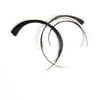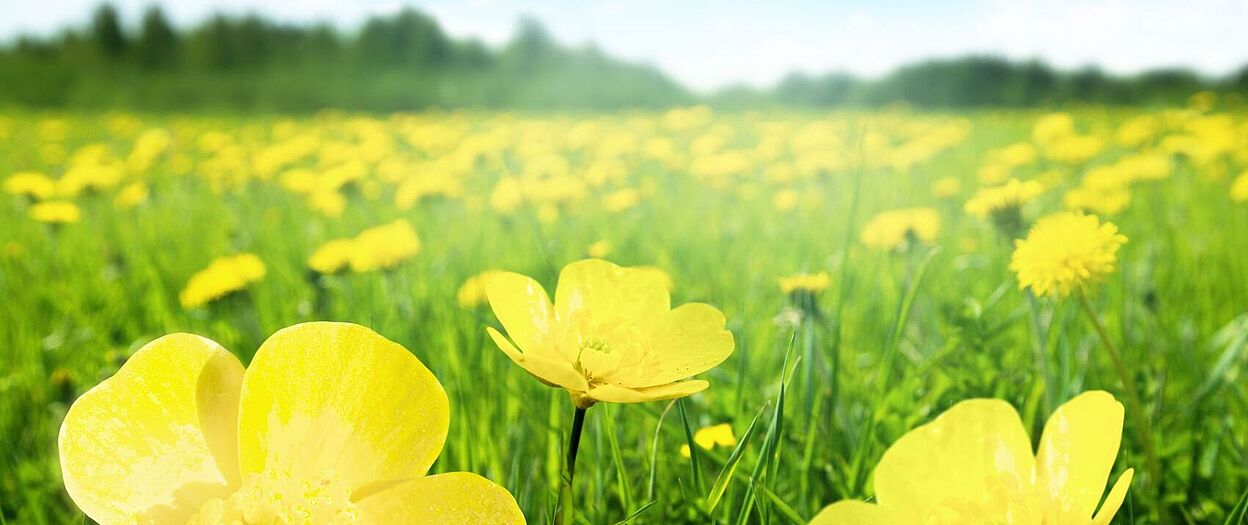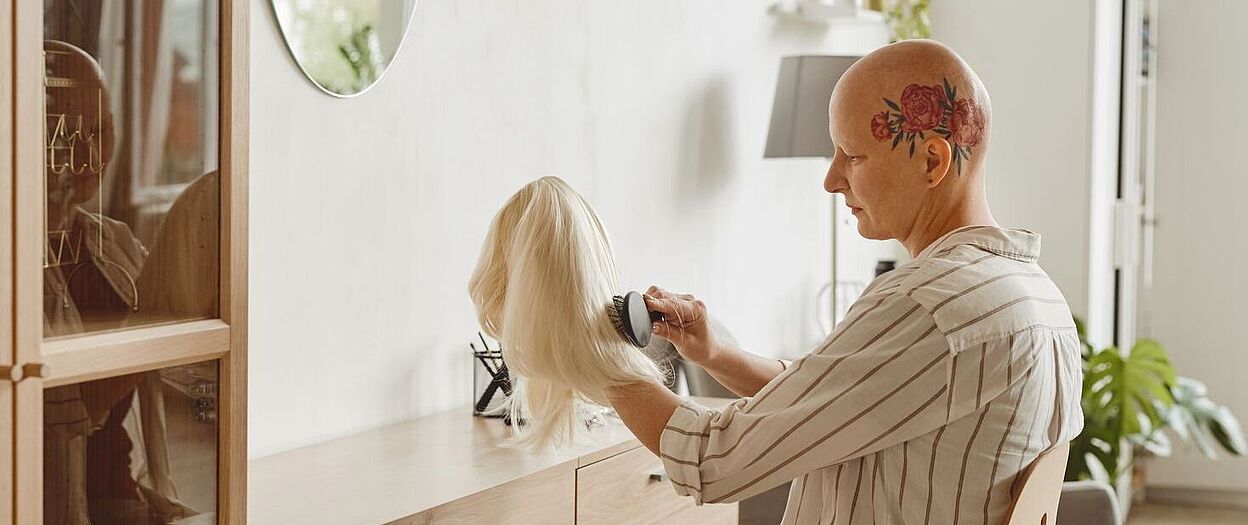|
Only natural ingredients ensure healthy and beautiful hair? Hairdresser and chemist Michael Ahlmeyer investigates the statement. In this day and age, more and more people are looking for natural alternatives in all areas of their lives - including hair care. But while some claim that natural ingredients are the best choice for healthy and beautiful hair, others remain skeptical and regard this as a mere myth. In this article, we're going to take a closer look at natural ingredients in hair care and whether they're really as effective as they say they are. What does science say? Natural ingredients such as aloe vera, coconut oil, plant extracts or jojoba oil have a firm place in numerous hair care products. Proponents of these ingredients say they can moisturize hair, strengthen it, add shine, and even promote hair growth. But what do the scientific facts say about this? It is important to note that not all natural ingredients are created equal. Some studies have shown that certain natural ingredients may actually have beneficial properties for hair. Aloe vera, for example, has moisturizing properties and can help reduce dryness and flaking.Jojoba oil helps regulate sebum production and keep the scalp healthy. The situation is different with plant extracts . In most cases, these serve more to provide a suitable story for product marketing. Often these extracts are only available in homeopathic dosescontained in the product and their actual effect may be questionable. A critical examination of studies on the subject of ingredients in hair cosmetics is of great importance. It is important to review the methodology and validity of the studies, note the independence of the studies, and consider the sample size and reproducibility of the results. The context and applicability of the study results should also be considered. Be critical Another critical consideration concerns the use of essential oils in hair care. Natural rose oil, for example, contains over 500 different ingredients , many of which are potentially allergenic . With synthetic fragrances, on the other hand, there is the possibility of deliberately omitting many of these potential allergens and thus producing a more compatible product. It is important that hairdressers and consumers understand the criticisms and limitations of natural ingredients in hair care. Natural cosmetics can be a good complement, but should not be seen as the sole solution. And be careful: The terms 'Clean Beauty' and 'Green Chemistry' are not proprietary and may lead to misleading marketing claims. Claims such as "Sulfate-free, Paraben-free, Silicone-free" are widespread, although in many cases they are unfair and not allowed: The Claims Regulation clarifies that ingredients that are considered safe, such as parabens, silicones and sulfates, must not be discounted. The focus is on the well-being of the customers As hairdressers, we regularly subject our customers' hair to a variety of chemical and thermal treatments, such as colouring, bleaching, straightening and perming. In this context, it is important to understand that the solution to hair care challenges cannot be found exclusively in natural cosmetics. However, natural cosmetics can be a useful addition for guests in the salon who want to avoid chemical treatments or who are sensitive to certain ingredients. It is crucial that consumers remain critical and do not rely solely on advertising claims. Making an informed decision about hair care products requires looking at different sources and information. Studies are an important aspect, however, one should not only trust individual studies, but also consider other factors such as scientific knowledge, clinical studies and consumer experiences. As hairdressers, we can help our clients choose the right products and treatments according to their individual hair needs. A balanced and differentiated consideration of natural ingredients as well as a critical attitude towards marketing statements are essential. Ultimately, the focus should be on the health and well-being of the customer, and hair care product selection should be based on sound information and individual preferences. from TopHair.de (you may need to translate this site)  Michael Ahlmeyer is a master hairdresser with two salons in Cologne. He develops high-quality hair cosmetics under the brand name "Michael Ahlmeyer" after using the corona pandemic for a correspondence course in chemistry in product development. More information about the products and contact at:michaelahlmeyerpro.com 9/14/2023 8 tips to make hair color last longerDue to the hype surrounding the Barbie film (#barbiecore), not only blonde is trending, but also Barbie pink on heads. So the hair color stays beautiful for a long time. With every color service in the salon, a hairdresser should discuss the care of the hair color with their customer. Especially with these fuschia and neon pink tones, which can fade quickly, customers should pay attention to color care. Andrew Smith, Proprietor of Andrew Smith Salons and Milkshake Global Ambassador, knows how hair color lasts longer. In the following, he reveals his tips, which he gives to his customers. 8 tips to make hair color last longer: 1. Use color shampoo and conditioner Look for products specifically designed for color-treated hair. Avoid shampoos that can attack color and opt for gentle ones, 2. Wash your hair less often Frequent washing can cause the color to fade faster. Try increasing the time between washes to maintain the vibrancy of the hair color. When washing your hair, you should use lukewarm water as hot water can leach the colour. 3. Use cold water for rinsing After shampooing and conditioner, rinse the hair with cold water. Cold water helps seal the cuticle of the hair, preserving color and adding shine. 4. Avoid heat styling devices when possible Excessive heat can bleach hair color, so you should minimize the use of heat styling devices such as flat irons, curling irons and blow dryers. If you want to use heat, you should apply a heat protectant spray beforehand. 5. Protect hair from the sun Prolonged stay in the sun can fade hair color. Wear a hat or use a hair product with UV protection if you are going to be in the sun for a long time. 6. Use Color Refreshing Products Maintain color vibrancy by using Color Refreshing Products (Direktzieher) such as shampoos, conditioners or hair masks specially formulated for the care of colored hair. These products help refresh the color between visits to the hairdresser. 7. Avoid chlorine whenever possible Chlorine in swimming pools can cause the color to fade or even change. To protect the (pink) hair, you should wet it with clear water before swimming and wear a swimming cap. After swimming, rinse hair thoroughly and use a clarifying shampoo to remove any chlorine residue. 8. Schedule regular touch-ups Colored hair needs maintenance to keep it looking fresh. Schedule regular touch-ups at the stylist to keep color vibrant and avoid visible roots. To be clear, the longevity of your (pink) hair color depends on various factors, including the condition of your hair and how well you care for it. from TopHair.de (you may need to translate this site)
As the demand for environmentally friendly and sustainable products continues to grow, so does the number of brands and businesses that make claims of being "green" or "eco-friendly". This marketing technique, known as greenwashing, can be misleading to consumers and cause harm to the environment. Spa professionals who sell cosmetics must be vigilant in spotting greenwashing and choosing products that are truly sustainable. In this article, we will explore what greenwashing is, the warning signs to look out for, and how to avoid it in cosmetic products. What is Greenwashing? Greenwashing is a marketing technique used by companies to create the impression that their products or services are environmentally friendly or sustainable, when in reality they are not. The term "greenwashing" was coined in the 1980s by environmentalist Jay Westerveld. Companies may use misleading labels, vague or unsubstantiated claims, or manipulative language to create a false impression of their products' sustainability. Greenwashing is a form of deception that can mislead consumers (and spa professionals alike) into thinking they are making environmentally conscious choices, when in reality, they are not. This can lead to negative consequences for the environment, as consumers may continue to buy products that harm the environment, believing they are doing the opposite. Warning Signs of Greenwashing To avoid falling prey to greenwashing, spa professionals must be aware of the warning signs. Some of the most common signs of greenwashing include:
How to Avoid Greenwashing Spa professionals can avoid greenwashing by following these steps:
Unfortunately, greenwashing is a common and deceptive marketing technique that can harm both consumers and the environment. For spa professionals who use and retail cosmetics, it is crucial to be aware of the warning signs of greenwashing and to choose products that are truly sustainable. By doing their research, looking for third-party certifications, and encouraging transparency from companies, spa professionals can help protect their clients and the planet from the negative effects of greenwashing. As consumers become more environmentally conscious and demand more sustainable products, it is likely that the trend of greenwashing will continue. However, by staying vigilant and informed, spa professionals can help promote genuine sustainability in the industry and make a positive impact on the world around us. Let's work together to create a more sustainable future for ourselves and for generations to come. from WellSpa360
Second hair needs intensive and special care, especially after the summer. The gfh, Society for Hair Aesthetics, gives tips on how to care for a second hair in the bathroom at home: Summer is coming to an end and often the hair has suffered from high temperatures, strong sun and UV radiation. Now it's time again: get to the hair care! For people who rely on hair replacements due to hair loss, this means a little more than just jumping in the shower. Scalp protection and professional care It is important to use the right hair replacement care products, because normal hair care products are only suitable for natural hair that has grown, but not for hair replacement. Special products ensure a long life for the hair replacement. The overall durability of the hair replacement depends on how often the hairpiece or wig is worn and how professionally it is treated and cared for. A permanent hair integration, for example, has to be removed and reattached every four to five weeks, since your own hair continues to grow. Under these conditions, a hairpiece can last between eight and ten months. Second hair: washing, caring for, styling Basically, it is important to distinguish whether the wig or hairpiece is made of real hair or synthetic fibers. Because the requirements for care and handling are fundamentally different. Real hair is basically treated like your own hair: it can be washed, blow-dried, treated with curlers and straighteners, even dyed and permed. However, as with natural hair, the hairstyle only lasts a few days. Human hair care - this is how it works:
Synthetic hair care - Do's & Don'ts Do's:
Don'ts:
Source: gfh, Society for Hair Aesthetics from TopHair.de
8/15/2023 Why does your hair curl in the summer? A chemist explains the science behind hair structureIf you have curly hair, you know that every day is a new adventure. What will my hair do today? Why does it curl better on some days than others? And even those without naturally curly hair might notice their hair curling—or, let's be honest, frizzing—a bit on humid summer days. As a person with curly hair, I'm always looking for the best way to care for and understand my hair. As a chemist, I'm interested in the science behind how my hair behaves at the molecular level. There are different hair types, from straight to curly, and they behave differently depending on their structure. But what hairs are made up of at the molecular level is the same. Hair structure Hair begins growing under the skin's surface, but it's what happens after it pokes through the skin that determines whether you have a good hair day or a bad one. Each hair can have three layers—the medulla, the cortex and the cuticle. You can think of each hair like a tiny tree trunk. The innermost, or core layer, is the medulla. This layer holds moisture, much like the pith in the center of a tree trunk. This layer is also very fragile, but only thick or coarse hairs contain this part—so those with thin or blond hair typically don't have the medulla layer in their hairs. Next is the cortex, which makes up most of a hair and is analogous to the wood of a tree. The cortex is made up of spring-shaped protein molecules that lie in parallel rows in a cylindrical bundle. The exact shape of that bundle is determined by the hair follicle, which is a pore on the skin from where the hair grows. How the hair grows out of the follicle influences the distribution of its proteins. So a straight follicle produces straight hair and a curved follicle produces curly hair. The less evenly distributed the squiggly proteins are, the curlier the hair. Your genetic code also plays a role in the shape of the cortex and, therefore, the shape and thickness of your hair. Lastly, the outermost layer of a hair is called the cuticle. The cuticle is like the bark of a tree—and it even looks like bark under a microscope. It's the cuticle's job to protect the cortex, but the cuticle is very easily damaged. Imagine lifting or removing the bark from a tree. Doing so would leave the wood inside susceptible to moisture loss, exposure to the environment and damage. The same is true for each hair. When the cuticle is damaged from brushing, chemicals, wind or heat, the proteins of the cortex have a much more difficult time lying smoothly together. This means they can lose moisture, gain moisture, fray like a rope—this causes split ends—and even break. All these factors can influence how your hair looks at any given moment. Hair in the summer So what does all of this have to do with humidity? Well, hair proteins contain many permanent chemical bonds. Only chemical treatments like perms or straightening can change these bonds. But there's another natural phenomenon that keeps the protein molecules in the cortex in line—something called hydrogen bonding. The long, stringy protein molecules in the cortex contain tiny positive and negative charges throughout their structure. Because opposite charges attract each other, entire rows of proteins can be attracted to each other like tiny, weak magnets. Heating or wetting your hair breaks the magnetlike attraction between these rows of proteins. So, heat and water can rearrange the proteins in your hair by breaking the hydrogen bonds that keep their structure together. Water is one of the best molecules at hydrogen bonding. So when a molecule of water has the opportunity to hydrogen bond with something, it will. In your hair, water can form hydrogen bonds between the rows of proteins in your hair's cortex. It is the extent to which this happens that determines your hair's fate. When just a little water enters the hair, like it might in lower humidity conditions or when the cuticle is healthy and able to keep too much water out of the cortex, your hair may curl. When humidity is high, or the cuticle is damaged, more water enters the hair. Too much water can swell and crack the cuticle, making hair look frizzy. Many people consider high humidity to be the problem behind frizzy hair, but styling your hair under high humidity and then entering a less humid environment can also be an issue. Water molecules leaving the hair's cortex can also lead to a change in hair behavior. Treating summer hair A damaged cuticle layer leaves the cortex more susceptible to water molecules creeping in or out and wreaking havoc on your hair. Anytime water molecules travel in or out, your hair's structure suffers and your hairstyle may be ruined. When the cuticle is healthy, it can protect the cortex, making your hair less susceptible to changes in the weather or environment. The bottom line is that a healthy hair cuticle helps keep proper moisture in the cortex. Heat from styling tools is the most common culprit behind damaged cuticles, but chemical treatments, brushing, sun and wind can also cause damage. Avoiding these activities can help, but some things, such as exposure to the sun, can't be avoided. You can also take care of your scalp—a clean, healthy scalp leads to healthy hair cuticles. Using moisturizing products on your hair can help maintain cuticle health as well. Oils and moisturizing treatments can even restore damaged cuticles. The good news is that by understanding your hair and treating it well, you can help prevent the undesired effects of humidity. from PHYS.org
|
Hair by BrianMy name is Brian and I help people confidently take on the world. CategoriesAll Advice Announcement Awards Balayage Barbering Beach Waves Beauty News Book Now Brazilian Treatment Clients Cool Facts COVID 19 Health COVID 19 Update Curlies EGift Card Films Follically Challenged Gossip Grooming Hair Care Haircolor Haircut Hair Facts Hair History Hair Loss Hair Styling Hair Tips Hair Tools Health Health And Safety Healthy Hair Highlights Holidays Humor Mens Hair Men's Long Hair Newsletter Ombre Policies Procedures Press Release Previous Blog Privacy Policy Product Knowledge Product Reviews Promotions Read Your Labels Recommendations Reviews Scalp Health Science Services Smoothing Treatments Social Media Summer Hair Tips Textured Hair Thinning Hair Travel Tips Trending Wellness Womens Hair Archives
June 2025
|
|
Hey...
Your Mom Called! Book today! |
Sunday: 11am-5pm
Monday: 11am-6pm Tuesday: 10am - 6pm Wednesday: 10am - 6pm Thursday: By Appointment Friday: By Appointment Saturday: By Appointment |







 RSS Feed
RSS Feed